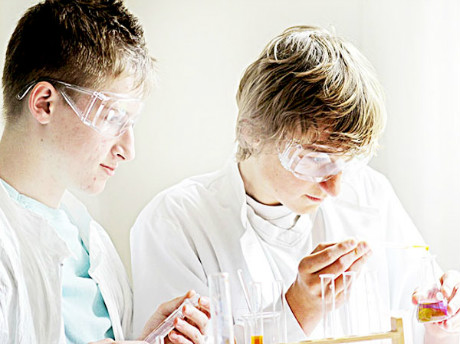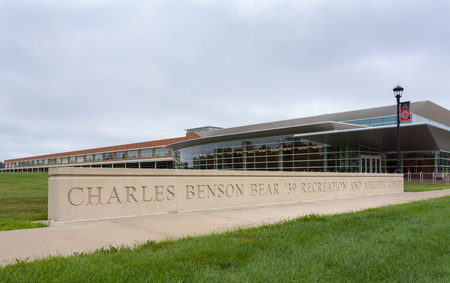SAT阅读素材之一个化学家,更多SAT考试资料,请继续关注小站教育。

In a lab in Princeton University’s ultra-sleek chemistry building, researchers toil in a modern-day hunt for an elusive power: alchemy.
Throughout the centuries, alchemists tried in vain to transform common metals like iron and lead into precious ones like gold or platinum. Today,Paul Chirik, a professor of chemistry at Princeton, has managed a new twist on the timeworn pursuit.
Dr. Chirik, 39, has learned how to make iron function like platinum, in chemical reactions that are crucial to manufacturing scores of basic materials. While he can’t, sadly, transmute a lump of iron ore into a pile of valuable jewelry, his version of alchemy is far more practical, and the implications are wide-ranging.
The process could herald a new era of flexible manufacturing technologies, while enabling companies to steer clear of scarce elements as prices rise or obtaining them becomes environmentally or geopolitically risky.
“No chemist would think lithium was in short supply,” Dr. Chirik said, “but what happens if you put a lithium battery in every car? This is why chemistry needs to be ahead of the curve. We need to have adaptable solutions.”
Despite the cost and relative scarcity of precious metals — iridium, platinum, rhodium — we rely on them to manufacture products from denim to beer, pharmaceuticals to fuel cells. The elements are used as catalysts, substances that kick off or enable chemical reactions.

Dr. Chirik’s work involves dissolved catalysts, which are mixed into the end product. The molecules of the catalyst dissipate during the reaction. For instance, a solution containing platinum is used to make silicone emulsifiers, compounds that in turn feed products like makeup, cookware and glue. Tiny amounts of the expensive metal are scattered in all these things; your jeans, for instance, contain unrecoverable particles of platinum.
“We’re not about to run out of platinum,” said Matthew Hartings, a chemist at American University in Washington, “but this process spends that platinum in a nonsustainable way.”
Dr. Chirik’s chemistry essentially wraps an iron molecule in another, organic molecule called a ligand. The ligand alters the number of electrons available to form bonds. It also serves as a scaffold, giving the molecule shape. “Geometry is really important in chemistry,” Dr. Hartings said. Dr. Chirik’s “ligands help the iron to be in the right geometry to help these reactions along.”
In addition to iron, Dr. Chirik’s lab also works with cobalt, which sits beside iron on the periodic table. Using cobalt, Dr. Chirik said, the scientists have generated “a whole new reaction that no one has ever seen before.” It produces new types of plastics using very inexpensive starting materials.
But the price of cobalt has shot up since the lab first began its research, thanks to the element’s use in the flat batteries that power gadgets like iPads and iPhones.
“The iPad has completely changed the price of cobalt,” Dr. Chirik said, “so something that once was garbage is now valuable.”
While the rising cost may undermine the economic incentive to use Dr. Chirik’s cobalt-fueled materials, it seems to perfectly underscore his basic point about the need for flexibility.
“There’s a broad appeal and logic to focusing on more abundant elements in designing catalysts,” said Roderick Eggert, a professor of economics and business at the Colorado School of Mines.
A vast majority of the chemicals we manufacture and then use to make other products require catalysts. And a lot of catalysts use so-called noble metals like platinum, palladium and rhodium, which are expensive. A pound of platinum costs about $22,000. A pound of iron, meanwhile, costs about 50 cents.
As an undergraduate chemistry major, Dr. Chirik worked on reactions that used iridium as a catalyst. A pound of iridium costs about $16,000. Dr. Chirik’s boss kept the iridium-based compound locked in a desk drawer.
“You had to walk from his office to the lab holding it with two hands, and not talk to anyone,” Dr. Chirik recalled. The experience left him with the seed of an idea, he said. “Why can’t we do this with something cheaper?”
On a spring afternoon at the Princeton lab, a graduate student toiled away at a glovebox, a vacuum chamber that prevents the iron from rusting. Rust is a potential downside of using iron in manufacturing, and controlling it could prove challenging and expensive. “We’re not talking about making a dish of spaghetti at home,” Dr. Chirik said, referring to the volume of chemicals involved when doing reactions on an industrial scale. It remains to be seen, he said, whether concerns about the use of an “air sensitive” substance outweigh concerns about the costs and environmental impact of precious metals.
相关推荐
-
香港考sat如何复习
2023-12-28![香港考sat如何复习]()
-
SAT写作:打造高分作文的秘诀
2024-01-05![SAT写作:打造高分作文的秘诀]()
-
还在盲目找攻略?先练完OG再去想拿高分
APP专享![还在盲目找攻略?先练完OG再去想拿高分]()
-
SAT备考时间管理:合理安排学习计划
2024-01-05![SAT备考时间管理:合理安排学习计划]()
-
SAT备考攻略:全方位解析
2024-01-05![SAT备考攻略:全方位解析]()
-
SAT考试策略:高效应对各类题型
2024-01-05![SAT考试策略:高效应对各类题型]()
-
SAT阅读:提升理解能力与答题速度
2024-01-05![SAT阅读:提升理解能力与答题速度]()
-
SAT语法:攻克关键知识点
2024-01-05![SAT语法:攻克关键知识点]()
-
SAT心理调适:考前减压与信心培养
2024-01-05![SAT心理调适:考前减压与信心培养]()
-
SAT词汇:快速记忆与运用
2024-01-05![SAT词汇:快速记忆与运用]()
-
SAT模拟题库:实战演练与解析
2024-01-05![SAT模拟题库:实战演练与解析]()
-
国内怎么考sat?
2023-05-22![国内怎么考sat?]()
-
浅析SSAT考试的4大趋势及相关备考建议
2014-07-01![浅析SSAT考试的4大趋势及相关备考建议]()
-
考生应当结合高考知识赢取SAT考试高分
2014-04-28![考生应当结合高考知识赢取SAT考试高分]()
-
常用SSAT考试阅读技巧解释说明
2014-07-18![常用SSAT考试阅读技巧解释说明]()
-
SSAT写作名言警句中英对照版合集
2014-02-27![SSAT写作名言警句中英对照版合集]()
-
【SAT考场攻略】SAT考试考场信息及备考复习计划
2015-04-22![【SAT考场攻略】SAT考试考场信息及备考复习计划]()
-
突破SAT阅读的4个难关、解决阅读考试的后顾之忧
2014-08-14![突破SAT阅读的4个难关、解决阅读考试的后顾之忧]()
-
5个方面培养SAT写作的逻辑结构
2014-08-13![5个方面培养SAT写作的逻辑结构]()
-
SAT阅读考试技巧的分析与总结
2014-08-25![SAT阅读考试技巧的分析与总结]()
-
提高SSAT阅读成绩的必要方法推荐
2014-06-12![提高SSAT阅读成绩的必要方法推荐]()
定制专属课程规划
领取成功
添加助教,定制你的专属课程规划

每日提分任务
专业提分资料
全程督学答疑




















